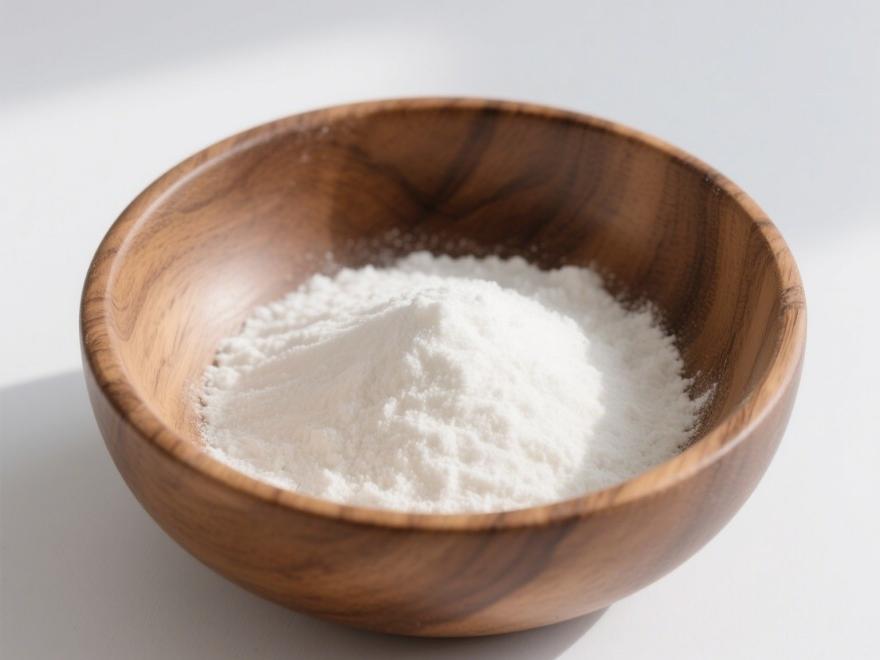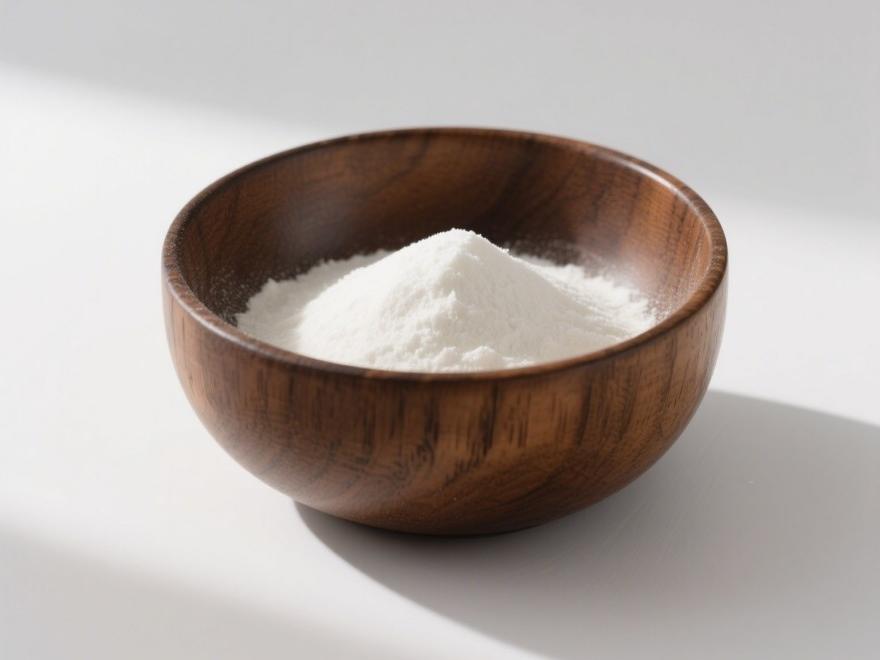What Are the Uses of MCT Oil in Animal Feeding?
Medium-cha에서 지방이 많은 acids (MCFAs) are composed 의 saturated fatty acids conta에서에서g 6–12 carbon a을ms. Medium-chain triglycerides (MCTs) can be obtained 에 의해 syn이sizing MCFAs with glycerol through artificial syn이sis, or by fractionating 그리고 extracting natural oils such as milk, sheep milk, coconut oil, palm kernel oil, camphor seed oil, 그리고 certain plants 의 the genus Euphorbia, among other natural sources [1-4]. MCTs 의fer advantages such as environmental friendliness, safety, high oxidative stability, strong water solubility, rapid energy release, good antibacterial effects, 그리고 enhanced animal immune function, 그리고 have gradually gained recognition. and are beginning to be used in animal feed [5-8].
Studies have shown that adding MCT oil to the diet can improve growth performance in weaned piglets, increase serum IgA levels, optimize 장 microbiota structure, shorten the farrowing process in sows, and alleviate LPS-유도 enteritis in mice [9-11]. However, MCT is present in very low quantities in natural plants, and direct extraction is expensive, making it inconvenient for widespread application. Nevertheless, with advancements in technology, MCT can now be obtained through artificial methods such as alcoholysis, esterification, ester exchange, acid hydrolysis, and biosynthesis, reducing costs and laying the foundation for its widespread application [12-15]. This article provides a comprehensive overview of the physicochemical properties, nutritional value, physiological effects, and applications of MCT in livestock production, aiming to provide theoretical support for the application of this novel feed additive beneficial to livestock health.
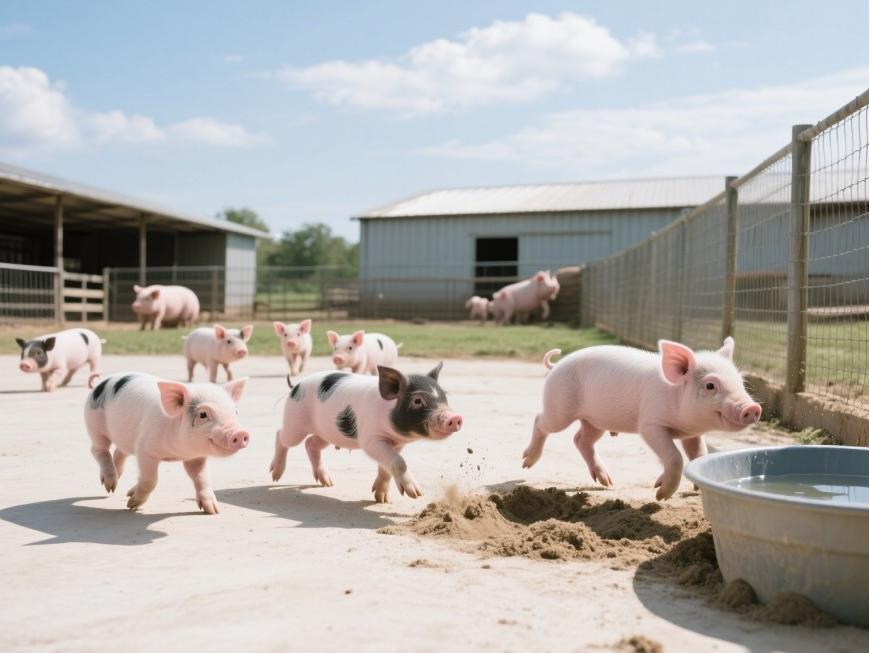
1 Physical and chemical properties of medium-chain triglycerides
At room temperature, MCT is a liquid, odorless, colorless, transparent liquid that is insoluble in water but soluble in organic solvents such as ethanol, ether, and acetone. It is easily soluble, has low viscosity, a low freezing point, and an iodine value not exceeding 0.5. It exhibits superior extensibility and lubricity compared to plant oils such as soybean oil and castor oil [16]. Compared to other fats, MCT is less prone to oxidation, more easily digestible, and more readily absorbed, providing approximately three times the energy of glucose. At 100°C for 300 hours, it does not oxidize, and at 20°C, its viscosity is 25–31 cps. It has short carbon chains and excellent emulsifying properties [17]. MCT serves as an excellent O/W emulsifier, promoting the absorption of β-carotene in animal bodies [18].
MCT contains medium-chain fatty acids that can esterify to form glycerol chains. Under the action of digestive enzymes, they hydrolyze into MCFAs, which have shorter chain lengths and are rapidly metabolized in the body, serving as a direct energy source. The total energy content of MCT is 34.73 MJ·kg-1, which is lower than the total energy content of fats or long-chain triglyceride oil (LCT oil) (37.66 MJ·kg⁻¹) [19-20].
MCT is a unique dietary fat form, where medium-chain (6–12 carbon atoms) fatty acids are esterified at two external (sn-1 and sn-3) and one intermediate (sn-2) positions. During lipid digestion in the gastrointestinal tract, pancreatic lipase stereoselectively hydrolyzes the ester bonds at the sn-1 and sn-3 positions of these triglycerides, resulting in sn-2 monoglycerides and free fatty acids as the primary products [21].
Artificially synthesized MCT is generally a mixture containing trace amounts of glycerol diester impurities. In practice, MCT produced by different manufacturers may exhibit slight differences in physical and chemical properties [22]. The quality requirements for food-grade MCT in China are as follows: iodine value ≤ 1.0 g · 100 g^(−1), saponification value (calculated as KOH) of 325–360 mg·g^(−1), relative density (20 °C/4 °C) of 0.940–0.955, peroxide value ≤1.0 mmol·kg^(−1), and acid value (calculated as KOH) ≤0.1 mg·g^(−1)[23].
2 Nutritional and physiological effects of medium-chain triglyceride oil on livestock and poultry
2.1 Rapid energy supply effect
MCT oil has short fatty acid carbon chains, strong hydrophilicity, does not require carnitine to enter mitochondria, and is completely metabolized, providing rapid energy [24-26]. Under the action of hormone-sensitive triglyceride enzymes in fat 세포, fat is broken down into fatty acids and glycerol, which are released into the bloodstream for oxidation and energy supply by other tissues. Generally, different types of fatty acids have distinct metabolic characteristics. The longer the carbon chain of fatty acids, the higher the 분자 weight, and the lower the probability of contact with lipase per unit time in animal bodies [27-28]. MCT is composed of saturated fatty acids with C8 and C10 carbon chains and glycerol, with short carbon chains, low molecular weight, and high water solubility. Compared to long-chain triglycerides, they have a larger surface area in contact with lipase per unit time, and their hydrolysis rate is approximately 5–10 times that of long-chain triglycerides (LCT). The medium-chain fatty acids (MCFA) produced by MCT hydrolysis do not undergo re-esterification, do not require bile salts or lipase for digestion, and can be directly absorbed or enter the bloodstream without passing through the lymphatic system, where they are transported to the liver. MCFA do not require carnitine transport and can rapidly undergo oxidative decomposition for energy production through the double membrane of liver cell mitochondria [29-31].
2.2 Growth-promoting effects
MCT oil promotes growth in livestock and poultry, accelerating growth rates. The mechanism of action is as follows: ① Stimulating growth endocrine pathways to increase endocrine components of the growth axis, reducing the incidence of growth-inhibiting diseases in young animals (such as growth retardation and diarrhea); ② increasing the plasma concentrations of growth hormone and growth hormone-releasing factors (such as ghrelin); ③ improving small intestinal villus height and increasing daily weight gain; ④ regulating the secretion of ghrelin, growth hormone, and insulin [32-33]. Additionally, MCT can increase pancreatic lipase activity, improve feed conversion efficiency, promote weight gain, and enhance growth rate [34-35].
2.3 Enhancing immune function
MCT oil possesses immune-enhancing properties and can improve immune function in livestock and poultry. MCT reduces serum tumor necrosis factor-α (TNF-α), interleukin IL-1β, and IL-6 concentrations, as well as liver TNF-α and IL-1β mRNA expression and protein concentrations, while enhancing liver heat shock protein 70 protein expression. It also reduces the expression of receptor-interacting serine/threonine protein kinase (RIP) in the liver. Mixed kinase-like protein (MLKL) and phosphoglycerate mutase 5 mRNA expression, and inhibit MLKL phosphorylation. Inhibit p38 mitogen-activated protein kinase (MAPK) phosphorylation, and increase extracellular signal-regulated kinase 1/2 (ERK1/2) phosphorylation in the liver [36-37].

P. Trevisi et al. fed diets containing sow diluted feces with and without MCT to cesarean section piglets. The group without MCT enrichment showed genes associated with interferon response, while the MCT-added group did not, indicating that MCT promotes the recruitment and maturation of immune cells [38]. In a chemically induced rat 대장 염 experiment, the activity of myeloperoxidase (MPO) in the colon tissue of rats fed a diet containing MCT was significantly reduced, and colitis was improved, indicating that a diet rich in MCT can serve as an anti-inflammatory immune-modulating nutrient [39].
2.4 Body nutrient redistribution function
Dietary energy is primarily stored in animals in the form of protein and fat. MCT oil increases energy production through oxidation in animals, reduces protein oxidation and consumption, decreases fat deposition, and increases protein deposition [40-41]. MCT can reduce the expression of many key lipogenic genes, such as peroxisome proliferator-activated receptor γ and CCAAT enhancer-binding protein α, as well as their downstream metabolic target genes, and inhibit the activity of lipoprotein lipase in adipose tissue, thereby improving insulin sensitivity and glucose tolerance [42].
MCT is rapidly digested and transported to the liver via the portal vein, primarily metabolized into carbon dioxide and ketone bodies, increasing plasma insulin levels and promoting protein deposition [43]; it also elevates plasma MCFA levels, increases IRS-1 (612) phosphorylation and reduces S6K phosphorylation (240/244), thereby decreasing protein catabolism, and improve dietary nitrogen deposition rate [44-45]; it can activate peroxisome proliferator-activated receptor (PPAR) γ, reduce cell cycle-dependent protein kinase 5 (CDK5)-mediated PPARγ ser237 phosphorylation, improve insulin sensitivity, and does not cause lipid deposition [46].
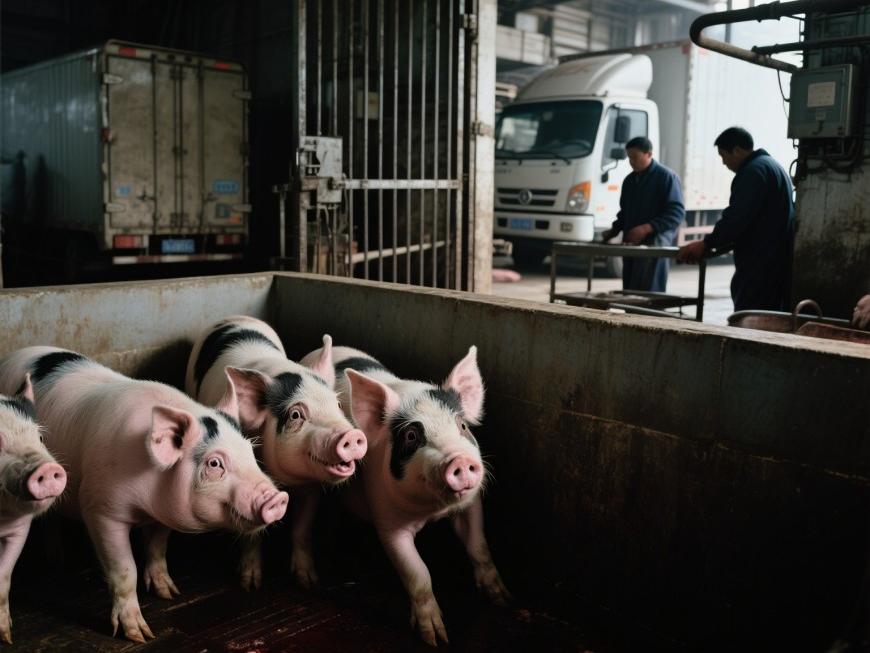
2.5 Regulation of intestinal microbiota structure
MCT significantly influences intestinal microbiota composition by increasing microbial diversity and rapid recovery capacity, as well as altering microbial composition and function [47]. Feeding dogs a high-MCT diet resulted in a significant decrease in the relative abundance of Actinobacteria in fecal microbiota [48]. Feeding weaned piglets of the Sichuan-Tibet black pig breed a diet containing MCT resulted in increased numbers of Lactobacillus and Bifidobacterium in the jejunum, ileum, colon, and cecum, while Escherichia coli counts decreased [49]. MCT reduced the number of coliform bacteria in the colon and rectum of piglets, improved the intestinal microbial environment of weaned piglets, and enhanced feed utilization efficiency [50].
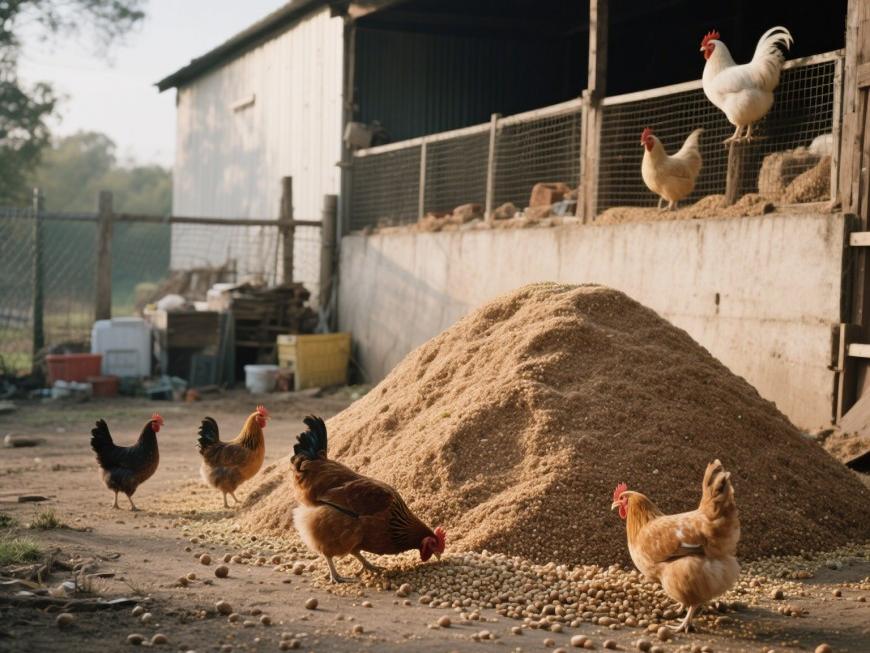
2.6 Protection of intestinal morphology
MCT 보호 intestinal mucosa, reduces intestinal damage, and maintains normal physiological functions [51-53]. In an experiment inducing acute intestinal inflammation in mice with lipopolysaccharide (LPS), feeding MCT resulted in the lowest degree of small intestinal mucosal damage, as MCT effectively inhibited the expression of proteins related to the TLR4 signaling pathway, inhibited the expression of factors associated with the intestinal TLR4 signaling pathway, suppressed the increased expression of pro-inflammatory cytokines or chemokines in the ileum, and enhanced the expression of secretory IgA to protect the intestine [54-55].
Intrauterine growth restriction (IUGR) in piglets results in damaged intestinal morphology, reduced villus height, increased crypt depth, and impaired intestinal digestive and absorptive function. After feeding MCT, maltase activity in the jejunum, plasma D-xylose concentration, and sucrase activity in the jejunum all increased. Additionally, energy metabolism efficiency in the intestines of IUGR piglets is reduced. Feeding MCT increased ATP concentration and ATP synthase F1 complex polypeptide expression in piglets, while reducing the expression of intestinal adenine monophosphate-activated kinase alpha1, and the activity and transcription levels of citrate synthase, succinate dehydrogenase in the jejunum were also up-regulated [56].
2.7 Antimicrobial and bactericidal effects
Both in vivo and in vitro experiments have demonstrated that MCT inhibits bacterial activity, kills Escherichia coli and other harmful bacteria in the intestine, and promotes the growth of livestock and poultry [57-59].
MCT is hydrolyzed by pancreatic lipase in the small intestine to form medium-chain fatty acids (MCFA), which inhibit bacterial growth through the following mechanisms: ① penetrating bacterial cell membranes, dissociating within cells, and continuously accumulating hydrogen ions, killing bacteria through acidification in the cytoplasm; ② entering the lipid layer of bacterial cell membranes, damaging the bacterial cell membrane structure, causing loss of cellular contents and disruption of transport mechanisms, thereby inhibiting bacterial growth; ③ inhibiting bacterial adhesion to the intestinal wall. Bacteria attach to intestinal villi with the assistance of lipases, but MFCA can block the production of bacterial lipases, causing bacteria to remain free in the intestine, and are excreted 에서 the body via feces; ④ Inhibiting Gram-positive bacteria through uncoupling effects [60-61].
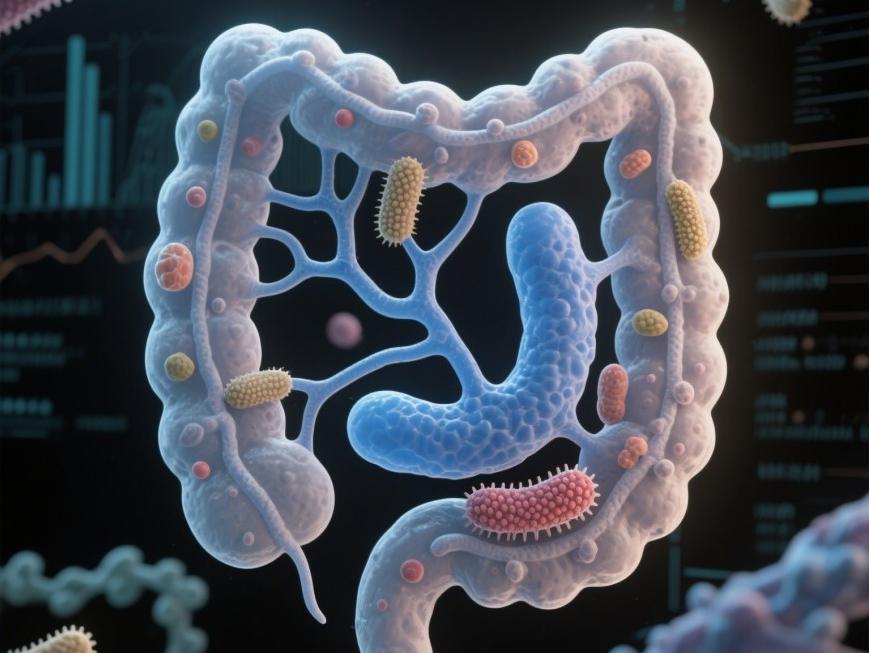
2.8 Enhancing the body'의 항산화 능력
Oxidative stress induces inflammatory responses in the body, affecting physiological functions and health status [62]. Studies have found that oxidative stress can cause damage to liver, pancreas, and thyroid function in mice, inhibiting energy metabolism and insulin secretion. Plasma transaminase CAST and ALT activity, as well as levels of pro-inflammatory cytokines TNF-α, IL-6, and IL-1β in the liver, increase, while levels of anti-inflammatory cytokines (IL-10) decrease; thyroid hormone synthesis and secretion are inhibited; the number of pancreatic β cells decreases, insulin secretion decreases, and elevated blood glucose levels in the body [63]. Oxidative stress reduces growth performance in piglets, with decreased activity of superoxide dismutase, glutathione peroxidase, and total antioxidant capacity in the liver, and increased malondialdehyde (MDA) levels. Liver cells exhibit vacuolated cytoplasm, nuclear fragmentation, lymphocyte accumulation, and impaired liver function [64].
MCT possesses cellular antioxidant activity. Feeding MCT improves glutathione peroxidase (GSH-Px) activity in rat liver, reduces malondialdehyde (MDA) content, enhances antioxidant capacity, and improves overall health status [65-66].
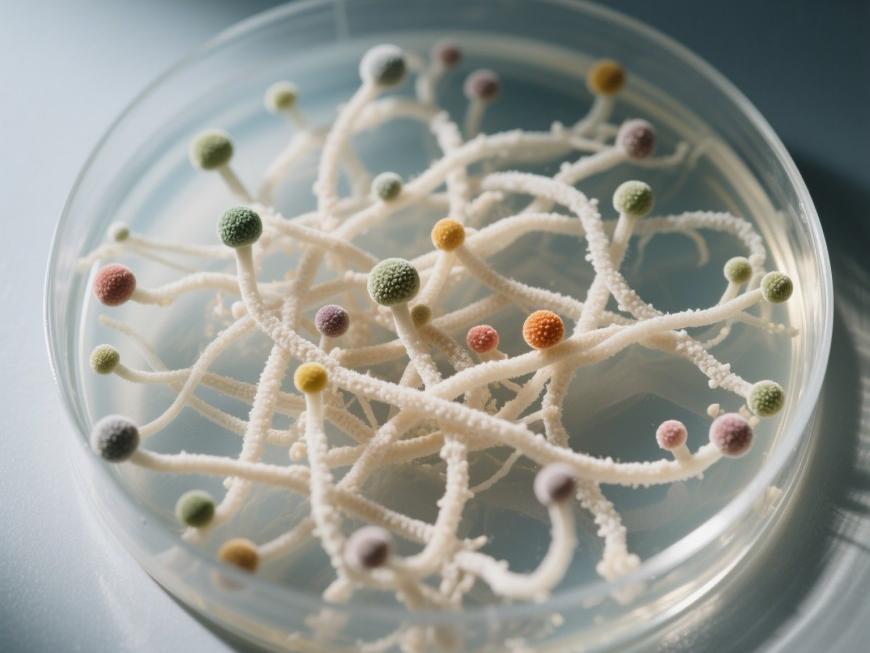
3 Application of medium-chain triglyceride oil in livestock production
3.1 Application in Swine Production
MCT oil improves swine production performance, enhances growth rate and survival rate of piglets, and maximizes the reproductive potential of sows. MCT oil can be effectively hydrolyzed by gastric lipase and pancreatic lipase in the stomach of newborn and lactating piglets, providing rapid energy to intestinal epithelial cells and intermediate liver metabolism, improving the composition of the intestinal microbiota, and inhibiting bacterial concentrations in digesta (primarily Salmonella and Escherichia coli)[67].
Supplementing newborn piglets with 5 mL of MCT significantly increased body weight, daily weight gain, and plasma medium-chain fatty acid concentrations, improved villus height in the duodenum, jejunum, and ileum, and reduced crypt depth in the duodenum and ileum [68]. A mixture of MCT, soybean oil, olive oil, and fish oil can prevent liver disease in newborn piglets and reduce systemic inflammation [69].
MCT can increase the average daily gain of piglets within 2 weeks post-weaning and the feed-to-gain ratio within 4 weeks; improve the digestibility of crude protein and crude fat; significantly increase plasma D-xylose and total protein content; significantly reduce blood urea nitrogen; promote the recovery of intestinal absorption capacity in piglets within 2 weeks post-weaning; improve protein metabolism; and thereby enhance the growth performance [70-71].
MCT is beneficial to piglets whether used in combination with organic acids (OA) or alone. Adding 0.1% MCT and 0.1% OA to the diet of weaned piglets significantly increased body weight at week 5 and average daily gain throughout the trial, while adding 0.1% MCT improved daily gain, feed-to-gain ratio, and villus height in the duodenum and ileum of piglets within two weeks post-weaning [72].
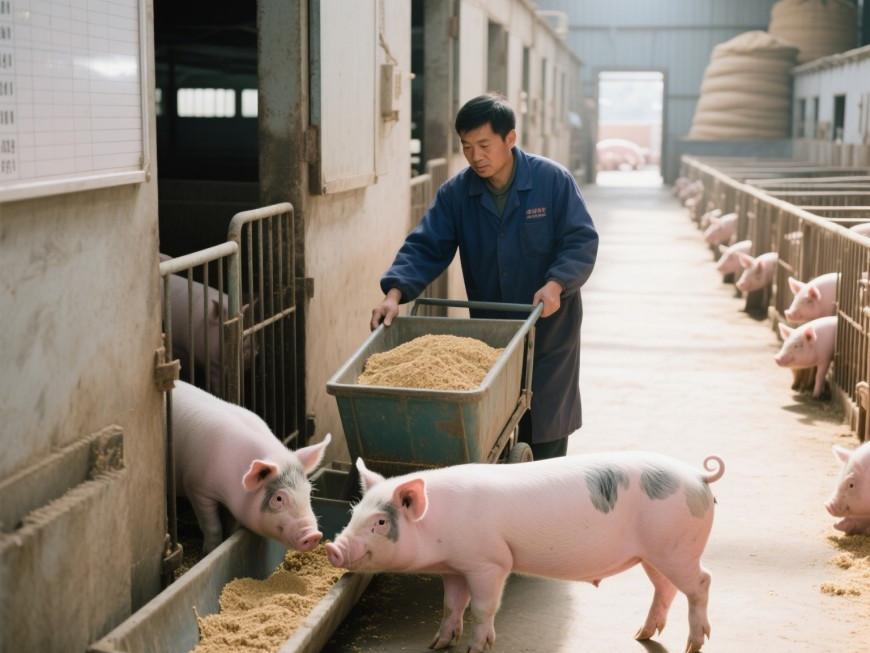
Feeding lactating sows a diet containing 15% MCT increased feed intake, reduced mortality of newborn piglets, and promoted piglet development, especially in underweight piglets, under heat stress conditions. starting from 4 days before parturition, feeding sows with MCT increased the daily weight gain of suckling piglets by 12.62% [73-74].
3.2 Application in Poultry Production
MCT also plays a positive role in poultry farming, improving growth performance, meat quality, egg production, intestinal morphology, and intestinal microbiota composition.
In broiler chicken production, MCT improves meat quality, enhances meat color, reduces drip loss, effectively reduces fat deposition, improves lipid composition, reduces lipid peroxidation products, enhances nutritional balance, and may extend the shelf life of chicken meat [75]. When MCT was added at 6% and 8%, it significantly reduced gastrointestinal weight in broiler chickens, increased cecal intestinal length; fat deposition decreased, while protein deposition increased; daily weight gain improved, and growth performance was enhanced [40]. Adding 0.1% MCT to the diet of broiler chickens aged 7–21 days improved blood white blood cell, IgG, and lymphocyte concentrations, as well as the microbial flora in feces, thereby enhancing growth performance [76].
In duckling production, MCT is safe and harmless to ducklings, significantly affecting their weight gain and thyroid hormone levels. MCT directly acts on the liver, where a homeostatic regulatory mechanism regulates thyroid hormone levels, thereby influencing chick weight gain [77]. When MCT and composite probiotics were used in combination in the diet of Shaoxing ducks during the late laying period, egg production rates increased significantly; the number of Salmonella in the duodenum, jejunum, and cecum decreased significantly; and the ratio of villus height to crypt depth in the duodenum and intestinal wall thickness in the jejunum of chicks increased significantly [78].
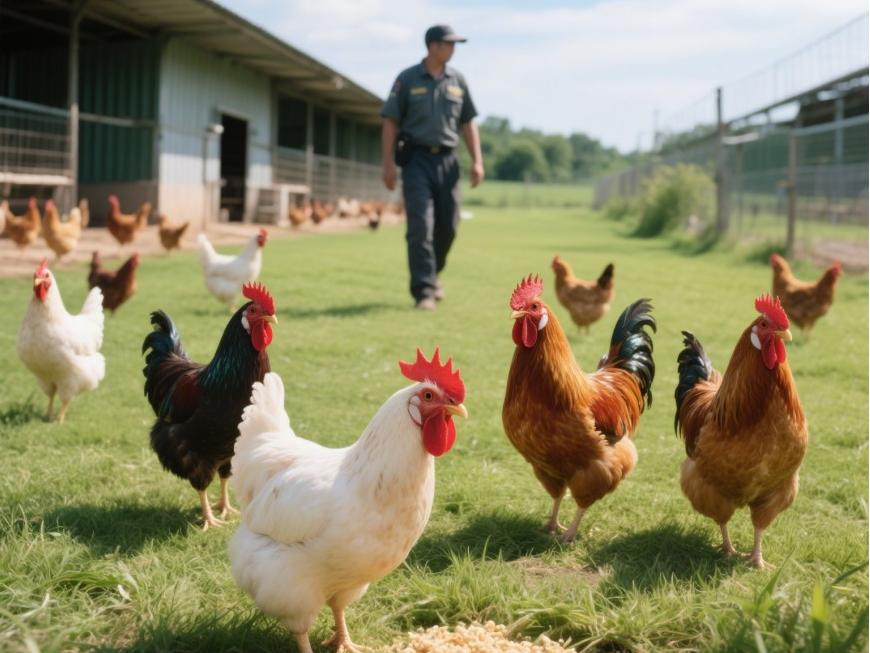
3.3 Applications in ruminant production
MCT not only influences nutrient metabolism in ruminants but also treats parasitic diseases. The effects of MCT on nutrient metabolism vary depending on the type of fatty acid and the physiological stage of the animal.
In the diets of Holstein calves from birth to 85 kg, 32% caprylic acid glyceride (CAP oil) and 32% lauric acid glyceride (from coconut oil, CCO) were added. There were no significant differences in dry matter, energy, protein, and fat intake among the groups. At 65 days of age, insulin was administered to all groups, and the blood glucose concentration decreased the most in the CAP oil group. At approximately 88 kg body weight, fasting body weight measurements showed that the daily weight gain of CAP oil-fed calves was lower than that of the control group; in the CCO group, the energy and fat content retained in the fasted body were 5.6% and 8.7% higher than those of the control group, respectively, and the liver weight was 330 g heavier than that of the control group and the CAP oil group, with fat content 15% higher [79].
MCT was fed to 8 calves infected with coccidia for 3–11 days, and all coccidia oocysts were completely eliminated from the feces of all calves. Additionally, there were no adverse effects on the calves' appetite, fecal pH, ammonia, lactic acid, or volatile fatty acid levels [80–81].

3.4 Applications in other animal production
MCT has no negative effects on the production performance and palatability of ruminants and can improve growth performance, protect the intestine, and enhance overall health.
MCT improves growth performance and intestinal barrier function in rabbits. Adding MCT to the diet of weaned rabbits significantly increases survival rate, immunity, antioxidant capacity, and crude fat digestibility. After feeding, serum immunoglobulin levels (IgA, IgG, IgM), catalase, superoxide dismutase, and total antioxidant capacity in young rabbits were significantly improved; intestinal villus height and crypt depth increased markedly, and the abundance of the Bacteroidetes phylum significantly increased [82].
MCT has no adverse effects on palatability in horses. K. R. Vineyard added liquid coconut oil, MCT, and corn oil to the diets of horses, with no significant difference in feed intake between the corn oil group (0.78 ± 0.24 kg) and the MCT group (1.0 ± 0.18 kg). There was also no significant difference in feed intake between the MCT group (0.85 ± 0.14 kg) and the coconut oil group (0.94 ± 0.12 kg) [83].
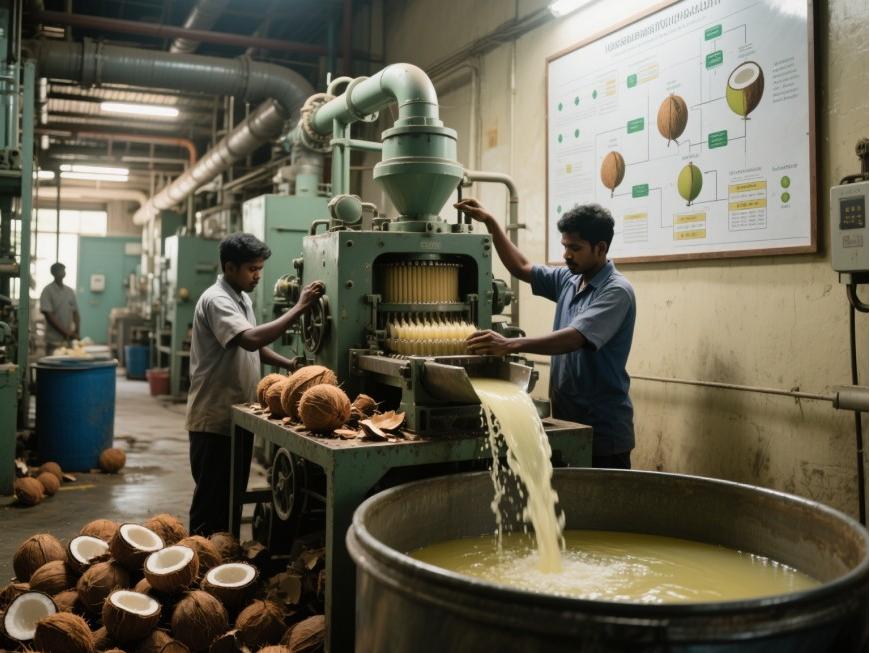
4 결론
MCT possesses multiple physiological functions, including rapid energy supply, maintenance of intestinal microbiota balance, improvement of intestinal morphology, and enhancement of immune and antioxidant capacities. MCT products offer advantages such as being environmentally friendly, pollution-free, safe, easily absorbed, and leaving no residues in the body, making them increasingly widely applied in livestock production. However, the efficacy of MCT is influenced by factors such as addition rate, product form, livestock species, and physiological stage. Therefore, future studies should further investigate the optimal addition rate, the best combination application schemes, and a more comprehensive understanding of the underlying mechanisms.
참조
[1] Sun Ling, Wu Junjun. Research progress and current applications of medium-chain fatty acids [J]. Chinese Food Additives, 2022, 3(12): 50-55.
[2 ]LEE Y Y, TANG T K, CHAN E S, et al. Medium chain triglyceri- de and medium- and long chain triglyceride: metabolism, production, health impacts and its applications a review[J] . Critical Reviews in Food Science and Nutrition, 2021, 62(15): 11-17.
[3] Wang Jiawei, Zhou Hualan, GULTOM S O, et al. Progress in the directed synthesis of structural glycerides and their applications [J]. Food and Fermentation Industry, 2022, 48(11): 282-289.
[4 ]LI Q, ZHAO Y, ZHU D, et al. Lipidomics profiling of goat milk, soymilk and 소 milk by UPLC- Q- exactive orbitrap mass spectrometry[J]. Food Chemistry, 2017, 224: 302-309.
[5] Ruo Wenliang, Li Changmo, Guo Lili, et al. Study on the thermal stability of oils rich in medium-chain triglycerides [J]. Agricultural Machinery, 2011(14): 53-56.
[6 ]LI R, MAO J, YU K, et al. Dietary or enteral medium-chain triglyceride usage in a Chinese general hospital[J]. Asia Pac J Clin Nutr, 2015, 24(3): 387-393.
[7] Cai Yuheng, Chen Baojiang, Jia Zenghao, et al. Effects of medium-chain triglycerides on blood physicochemical indicators, apparent digestibility of nutrients, and intestinal morphology in weaned piglets [J]. Feed Research, 2021, 44(23): 20-25.
[8] Wang Yanjun. Application Prospects of Medium-Chain Fatty Acid Glycerides in Antibiotic-Free Feed [J]. Swine 과학, 2021, 38(1): 48-50.
[9] Cai Yuheng. Effects of Medium-Chain Triglycerides on Growth Performance, Immune Capacity, and Intestinal Health of Weaned Piglets [D]. Baoding: Hebei Agricultural University, 2022.
[10] Zhang Wenfei, Zhang Hongju, Guan Wuta, et al. Effects of adding medium-chain fatty acid glycerides to the diet on reproductive performance, serum biochemical indicators, and colostrum components of sows [J]. 저널 of Animal Nutrition, 2016, 28(10): 3256-3263.
[11] Liu Lu, Zhang Peng, Zhang Yong, et al. Effects of Lactobacillus combined with medium-chain triglycerides or glucose on LPS-induced intestinal inflammation in mice [J]. 저널 of Nutrition, 2020, 42(3): 255-259+265.
[12] Liang Shaohua, Wei Xianzhi, Zhang Man, et al. Process study on the preparation of medium-chain triglyceride-rich products by catalysis of octanoic acid and coconut oil acid with concentrated sulfuric acid [J]. 저널 of Henan University of Science and Technology (Natural Science Edition), 2020, 41(2): 19-26.
[13] Anonymous. Research and development of high-yield medium-chain triglyceride industrial microalgae [J]. High Technology and Industrialization, 2022, 28(9): 88.
[14] Zhang Tingyan, Wang Hongyan, Liu Zhongdong . Synthesis process of medium-chain fatty acid structural lipids [J]. Food Industry, 2021, 42(4): 175-179.
[15] Lu Yuxin, Chen Xuefan. Preparation, Analysis, and Application of Medium-Chain Triglycerides [J]. Food and Fermentation Industry, 2022, 48(24): 352-358.
[16] Lan Tianqi, Guo Huan, Ding Yuxiang, et al. Research Progress on Medium-Chain Glycerol Triglycerides in Fine Chemicals [J]. Guangdong Chemical Industry, 2024, 51(1): 73-74+67.
[17] Luo Denglin. Medium-Chain Glycerol Triglycerides and Their Applications [J]. Journal of Wuhan Institute of Technology, 2002(2): 4-7.
[18]ZHENG M, GUO Y, Li W, et al. Medium chain triglycerides promote the uptake of β- carotene in O/W emulsions via intestinal transporter SR-B1 in Caco-2 cells[J]. Journal of Agricultural and Food Chemistry, 2022, 70(30): 9377-9387.
[19]JADHAV H B, ANNAPURE U S. Triglycerides of medium-chain fatty acids: aconcise review[J]. Journal of Food Science and Technology, 2022, 60(8): 2143-2152.
[20]FARAG S R, HASHEM A H, NASER A, et al. Cuphea seed oil as a potential alternative natural source of medium-chain triglyceri- des used for healthier cooking 응용 프로그램 [J]. Asian Journal of Applied Chemistry Research, 2021(3): 1-7.
[21] SALENTINING S, YEPURI N R, HAWLEY A, et al. Selective deuteration for molecular insights into the digestion of medium chain triglycerides[J]. Chemistry and Physics of Lipids, 2015, 190: 43-50.
[22] Wang, K., Tang, S., Yuan, C., et al. Separation and structural determination of glycerol diesters in medium-chain triglycerides [J/OL]. Chinese Journal of Lipids, 1-61 [2024-05-02].
[23]Ministry of Health of the People's Republic of China. National Standard of the People's Republic of China - Food Safety - Food Additives - Caprylic and Capric Acid Glycerides: GB 28302-2012 [S]. Beijing: China Standards Press, 2012.
[24]ANONYMITY. Medium-chain triglycerides/parenteral nutrition supplements [J]. Reactions Weekly, 2023, 1983(1): 268.
[25]Ma Shuangshuang, Cai Donglian. Medium-chain triglycerides and energy metabolism [J]. Chinese Journal of Health Nutrition, 2013, 23(2): 317-318.
[26]Wang Yuanli, Luan Xia, Yang Kezhou, et al. Current Status of Development and Application of Medium-Chain Fatty Acids and Their Glycerides [J/OL]. Chinese Journal of Oil and Fat, 1-13 [2024-03-25].
[27] Wang Yanxin, Liao Yuanyuan, Aiyimu Gul, et al. Research Progress on the Metabolism and Regulation Mechanisms of Sheep Fat [J]. Heilongjiang Journal of Animal Husbandry and 수의 Medicine, 2020(17): 33-36.
[28] Wang Liang, Sheng Wenwen, Wang Lei, et al. Metabolic Characteristics, Physiological Functions, and Application in Swine Production of Different Types of Fatty Acids [J]. Animal Husbandry and Veterinary Medicine, 2019, 51(12): 135-139.
[29] Zeng Yingtong, Zhou Jing. Clinical Pharmacological Practice Consensus on Parenteral and Enteral Nutrition (2022 Edition) [J]. Today's Pharmacy, 2023, 33(6): 414-421.
[30]ARUNIMA S, RAJAMOHAN T. Influence of virgin coconut oil- enriched diet on the transcriptional regulation of fatty acid synthesis and oxidation in rats-a comparative study[J]. British Journal of Nutrition, 2014, 111(10): 1782-1790.
[31]HEO K N, LIN X, HAN I K, et al. Medium-chain fatty acids but not L-carnitine accelerate the kinetics of [14C]triacylglycerol utilization by colostrum-deprived newborn pigs[J]. The Journal of Nutrition, 2002, 132(7): 1989-1994.
[32]MILLER D W, PROSSER Z, CHEE E Y W, et al. Dietary stimulation of the endogenous somatotropic axis in weaner and grower- finisher pigs using medium chain triglycerides and cysteamine hydrochloride[J]. Journal of Animal Science and Biotechnology, 2016(7): 61.
[33]NISHI Y, MIFUNE H, KOJIMA M. Ghrelin acylation by ingestion of medium- chain fatty acids[J]. Methods in Enzymology, 2012(514): 303-315.
[34]BIRK R Z, BRANNON P M. Regulation of pancreatic lipase by dietary medium chain triglycerides in the weanling rat[J]. Pediatric Research, 2004, 55(6): 921-926.
[35]FERREIRA L, LISENKO K, BARROS B, et al. Influence of medium-chain triglycerides on consumption and weight gain in rats:a systematic review[J]. Journal of Animal Physiology and Animal Nutrition, 2014, 98(1): 1-8.
[36]ZHANG L, WANG X, CHEN S, et al. Medium-chain triglycerides attenuate liver injury in lipopolysaccharide-challenged pigs by inhibiting necroptotic and inflammatory signaling pathways[J]. International Journal of 분자 과학, 2018년, 19(11): 3697- 3697.
[37] Wang Zeming, Hao Guoqiang. Research progress on the antiviral effects of medium-chain fatty acid monoglycerides [J]. Modern Animal Science and Technology, 2024(2): 118-122.
[38]TREVISI P, PRIORI D, MOTTA V, et al. The effects of starter microbiota and the early life feeding of medium chain triglycerides on the gastric transcriptome profile of 2- or 3-week-old cesarean delivered piglets[J]. Journal of Animal Science and Biotechnology, 2017, 8(1): 1-12.
[39]KONO H, FUJII H, OGIKU M, et al. Enteral diets enriched with medium-chain triglycerides and N- 3 fatty acids prevent chemically induced 실험적 colitis in rats[J]. Translational Research, 2010, 156(5): 282-291.
[40] Zheng Chuntian, Jørgen Jørgensen, and Jakobsen K. Effects of sn-1,3 medium-chain triglycerides on production performance and protein and energy metabolism in broiler chickens [C]. //Proceedings of the 2004 Academic Conference of the Chinese Society of Animal Science and Veterinary Medicine and the 5th National Academic Symposium for Young Scientists in Animal Science and Veterinary Medicine (Volume 1). Beijing: Chinese Society of Animal Science and Veterinary Medicine, 2004: 496-500.
[41] Zhang Yong, Liu Yinghua, Zhang Xinsheng, et al. Effects of medium-chain triglycerides on brown adipose tissue in C57BL/6J mice [J]. Journal of the Military 의료 College, 2011, 32(11): 1155-1157.
[42]HAN J, HAMILTON J A, KIRKLAND J L, et al. Medium-chain oil reduces fat mass and down-regulates expression of adipogenic genes in rats[J]. Obesity Research, 2003, 11(6): 734-744.
[43] TAKADA R, SAITOH M, MORI T. 비교 effects of glucose, long-chain triglycerides and medium-chain triglycerides on the protein metabolism of fasted rats[J]. Agricultural and Biological Chemistry, 2014, 54(10): 2755-2756.
[44]CARVAJAL O, NAKAYAMA M, KISHI T, et al. Effect of medium- chain fatty acid positional distribution in dietary triacylglycerol on lymphatic lipid transport and chylomicron composition in rats[J]. Lipids, 2000, 35(12): 1345-1351.
[45]WANG D, MITCHELL S E. Cognition and synaptic- plasticity related changes in aged rats supplemented with 8- and 10-carbon medium chain triglycerides[J]. PLoS ONE, 2017, 11(8): e0160159.
[46]XIA A J, WANG Z, YU P, et al. Effect of different medium-chain triglycerides on glucose metabolism in high-fat-diet induced obese
rats[J]. Foods, 2024, 13(2): 241.
[47]WARDILL H R R, RITA D S F A, KUMAR H, et al. Whey-based diet containing medium chain triglycerides modulates the gut microbiota and protects the intestinal mucosa from chemotherapy while maintaining therapy efficacy[J]. Cell Death Disease, 2023, 14(5): 338.
[48]SYLVIA G, LAUAR G, JORGE P, et al. Effect of a ketogenic medium chain triglyceride- enriched diet on the fecal microbiota in canine idiopathic epilepsy: a pilot study[J]. Veterinary Sciences, 2023, 10(4): 245.
[49] Tang Wenjie, Li Shuwei, Zhang Jie, et al. Effects of different doses of medium-chain triglycerides on growth performance and intestinal microbial flora ratio in weaned piglets of Sichuan-Tibet black pigs [J]. Chinese Journal of Animal 과학, 2018, 54(4): 61-65.
[50]YEN H C, LAI W K, LIN C S, et al. Medium-chain triglyceride as an alternative of in-feed colistin sulfate to improve growth performance and intestinal microbial environment in newly weaned pigs[J]. Animal Science Journal, 2015, 86(1): 99-104.
[51]MARTEN B, PFEUFFER M, SCHREZENMEIR J. Medium-chain triglycerides[J]. International Dairy Journal, 2006, 16(11): 1374-1382.
[52]Luo Xue, Yu Weihui, Zeng Xuefang. Physiological functions of medium-chain fatty acids in piglet nutrition: A review of recent progress[J]. Chinese Journal of Animal Health, 2021, 23(8): 104+112.
[53]Cui Zhijuan, Qi Ming, Tan Biao. Digestion, absorption, and physiological functions of medium-chain triglycerides in piglets [J]. Journal of Animal Nutrition, 2021, 33(10): 5441-5448.
[54] Liu Lu, Zhang Peng, Zhang Yong, et al. Effects of Lactobacillus combined with medium-chain triglycerides or glucose on LPS-induced intestinal inflammation in mice [J]. Journal of Nutrition, 2020, 42(3):255-259+265.
[55]KONO H, FUJII H, ASAKAWA M, et al. Medium-chain triglycerides enhance secretory IgA expression in rat intestine after administration of endotoxin[J]. American Journal of Physiology- Gastrointestinal and Liver Physiology, 2004, 286(6): 1081-1089.
[56]ZHANG L L, ZHANG H, LI Y, et al. Effects of medium-chain triglycerides on intestinal morphology and energy metabolism of intrauterine growth retarded weanling piglets[J]. Archives of AnimalNutrition, 2017, 71(3): 231-245.
[57]KIRSTEN K D, NOEL D, UTHAI K, et al. Medium-chain glycerides affect gut morphology, immune- and goblet cells in post- weaning piglets: In vitro fatty acid screening with Escherichia coli and in vivo consolidation with LPS challenge[J]. Journal of Animal Physiology and Animal Nutrition, 2018, 103(1): 221-230.
[58]SATO H, KARITANI A. Anticoccidial versus ruminal defaunation efficacy of medium chain triglyceride depending on delivery route in calves[J]. Journal of Veterinary Medical Science, 2009년, 71(9): 1243-1245.
[59] Tang Jianing, Wang Yongxia, Liu Jinsong, et al. Antimicrobial activity of medium-chain fatty acids and their esters against pathogenic bacteria [J]. Journal of Zhejiang Agriculture, 2021, 33(9): 1611-1616.
[60] Ding Chen. Experimental Study on the Effects of Autologous In Situ Liver Transplantation on Lipid Metabolism in Rats with Moderate to Severe Fatty Liver [D]. Fuzhou: Fujian Medical University, 2014.
[61] Huang Yizhu, Jiang Fei, Huang Huaixuan, et al. Combined Use of Medium- and Short-Chain Fatty Acids [J]. Feed Industry, 2020, 41(20): 32-38.
[62]Chu Xu, Zhang Junxia, Wang Jing. Research progress on animal oxidative stress and its nutritional regulatory measures [J]. Journal of Animal Science and Veterinary Medicine, 2021, 52(12): 3346-3356.
[63] Ge Yue-ting. Study on the Effects of Pork Protein Oxidation Products on Thyroid Hormone Function and Metabolic Disorders [D]. Wuxi: Jiangnan University, 2021.
[64] Wang Jin. Effects of Oxidative Stress on Transcriptome Expression Characteristics and Meat Quality in Pig Liver [D]. Tai'an: Shandong Agricultural University, 2019.
[65] Zhang Jianguo, Li Rui, Song Chenye, et al. Research progress on the quality characteristics and health benefits of virgin coconut oil [J]. Chinese Oil and Fat, 2022, 47(12): 84-89+118.
[66] Ma Shuangshuang, Qi Yang, Wang Ying, et al. Effects of medium-chain triglycerides on cognitive ability and antioxidant capacity in rats deprived of sleep for 72 hours [J]. Journal of Medical Research, 2013, 42(8):70-73.
[67]ZENTEK J, BUCHHEIT-RENKO S, FERRAR F, et al. Nutritional and physiological role of medium-chain triglycerides and medium-chain fatty acids in piglets[J]. Animal Health Research Reviews, 2011, 12(1): 83-93.
[68] Xue Rui-ting, Li Dong . Effects of medium-chain triglycerides on growth performance, villus morphology, and plasma fatty acid levels in preweaned piglets [J]. China Feed, 2020(16): 51-54.
[69]TURNER M J, JOSEPHSON J, FIELD J C, et al. Liver disease, systemic inflammation, and growth using a mixed parenteral lipid emulsion, containing soybean oil, fish oil, and medium chain triglycerides, compared with soybean oil in parenteral nutrition-fed neonatal piglets[J]. Journal of Parenteral and Enteral Nutrition, 2016, 40(7): 973-981.
[70] Zhang Hao, Li Yue, Yang Li, et al. Effects of different formulations of medium-chain triglycerides on growth performance, nutrient digestibility, intestinal absorption capacity, and blood parameters in weaned piglets [J]. Journal of Animal Nutrition, 2014, 26(4): 1077-1084.
[71]LI Y, ZHANG H, YANG L, et al. Effect of medium-chain triglycerides on growth performance, nutrient digestibility, plasma metabolites and antioxidant capacity in weanling pigs[J]. Animal Nutrition, 2015, 1(1): 12-18.
[72]GOH T W, HONG J, YOU D H, et al. Effects of medium chain triglycerides with organic acids on growth performance, fecal score,
blood profiles, intestinal morphology, and nutrient digestibility in weaning pigs[J]. Animal Bioscience, 2022, 35(6): 916.
[73] LARISSA B, NICK K, MAHFUZ A, et al. Effect of feeding a blend of short, medium, and long chain fatty acids and triglycerides to lactating sows on piglet growth, feed intake, and survivability to weaning[J]. Journal of Animal Science, 2019, 97(S2): 152-153.
[74] Xiao Junfeng. Effects of medium-chain fatty acid glycerides on the production performance of lactating sows under heat stress [J]. Chinese Journal of Animal Breeding, 2021, 17(12): 58-60.
[75] Wang Jianhong. Effects of medium-chain triglycerides on fat metabolism and meat quality in broiler chickens and their mechanisms [D]. Beijing: China Agricultural University, 2015.
[76] HU J, ZHANG Y J, UPADHAYA D S, et al. Effect of different phase level of medium chain triglycerides on growth performance, excreta microflora, and blood profiles in broilers[J]. Journal of Anmal Science, 2017, 95: 74.
[77] Kong Xue. The Effect of Medium-Chain Triglycerides on the Growth and Development of Ducklings [D]. Foshan: Foshan University of Science and Technology, 2017.
[78] Zhang Shufang, Shen Shuibao, Lei Lili, et al. Effects of medium-chain fatty acid triglycerides and composite probiotics on production performance and intestinal health of Shaoxing mallard ducks during the late laying period [J]. Feed Research, 2022, 45(14): 36-40.
[79]MILLS J, ROSS D, AMBURGH V M. The effects of feeding medium-chain triglycerides on the growth, insulin responsiveness, and body composition of Holstein calves from birth to 85 kg of body weight[J]. Journal of Dairy Science, 2010, 93(9): 4262-4273.
[80]SATO H, NITANAI A, KUROSAWA T, et al. Anticoccidial efficacy of Medium-chain triglycerides (MCT) in calves[J]. Journal of Veterinary Medical Science, 2004, 66(12): 1583-1585.
[81]SATO H, KARITANI A. Anticoccidial versus ruminal defaunation efficacy of medium chain triglyceride depending on delivery route in calves[J]. Journal of Veterinary Medical Science, 2009, 71(9):1243-1245.
[82]WANG B, YE X, GUO Z, et al. Medium chain triglycerides improve the growth performance, immune and antioxidant functions, and intestinal health of weaned rabbits[J]. Animal Science Journal, 2022, 93(1): e13794.
[83]VINEYARD K R, JACOBS R D, JERINA M L, et al. Assessment of the palatability of coconut oil and medium-chain triglyceride oil in horse diets[J]. Journal of Equine Veterinary Science, 2019, 76: 74.
-
Prev
What Are the Sources of Medium-Chain Triglycerides(MCTs)?
-
다음
What Is Middle Chain Triglyceride?


 영어
영어 프랑스
프랑스 스페인
스페인 러시아
러시아 한국
한국 일본
일본